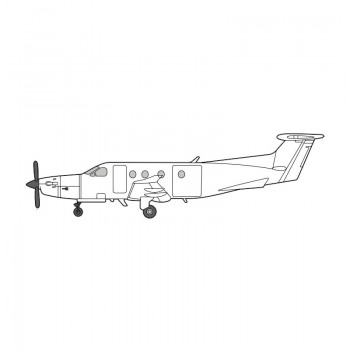

That leaves 63% yet to comply.Īs we have mentioned in past articles, a potential operator should focus on payload capability as a key factor. Meanwhile, 134 (37%) of the 363 King Air 350i fleet is ADS-B equipped. Of the 760 PC-12 NGs worldwide, 208 (27%) are ADS-B equipped, leaving 73% of the fleet yet to comply. North America is home to the majority of the PC-12NG and King Air 350i fleet (accounting for 66% of each), whereas next, the PC-12 NG has 17% of its fleet based in Europe while the King Air 350i has 16% in Asia. Average time on the market before a sale is completed is 255 days. The fleet percentage currently ‘For Sale’ is just 2.8%. Six have been retired.Īs of April 2018, the King Air 350i market is comprised of 84% flying with the same owner since new versus 16% purchased on the used market. 360 are wholly-owned with three in fractional ownership. Just 3.9% of the fleet is currently ‘For Sale’ and the average time on the market is 180 days.īy comparison, 398 King Air 350i aircraft have been built, with 363 in operation globally. Two have been retired.Īs of April 2018, the PC-12 NG market is comprised of 72% flying with the same owner since new versus 28% purchased on the used aircraft market. 688 are wholly owned, 33 are in shared ownership and 39 in fractional ownership. The total number of PC-12 NG aircraft manufactured (as of this writing) is 798, with 754 remaining in operation globally (per JETNET). It is also certified for single-pilot operation. The PC-12 NG is equipped with both a passenger door and a cargo door, and is available in several configurations, including six-passenger executive, nine-passenger standard, or commuter, cargo and combi. The cockpit is equipped with Honeywell Apex Avionics.
#Pilatus operating cost serial number
The PC-12/45 was manufactured from 1995 to 2008 the PC-12/47 was manufactured between 20 and the PC-12 NG (Next Generation) is the updated version, starting at serial number 1,001 in 2008. Swiss and US certification was received in 1994. The first flight of the first of two prototypes took place in 1991. The Pilatus PC-12/45 is a high-powered single-engine turboprop with a four-blade propeller.

The King Air 350i also boasts a quieter cabin with sound levels reduced to an average of 78dBA. The model 350i is a derivation of the original model 350 featuring a "FlexCabin" configuration that can be swapped easily for a variety of missions such as passenger transport, cargo, air ambulance or other special missions.
#Pilatus operating cost windows
The King Air 350 is essentially a model 300 with a 34-inch fuselage stretch two additional cabin windows on each side 41ins wing span increase drag-reducing winglets (for extra range) and 1,000lbs additional MGTOW. The first King Air 350 deliveries occurred in 1990 as the ‘Super’ King Air 350, and the King Air 350 was built until 2009. The King Air family has been in continuous production since 1974, the longest production run of any civilian turboprop aircraft in its class. Is a single-engine or twin-engine turboprop the better choice for your mission needs? We’ll explore the merits of each over the following paragraphs… How does the twin-engine Beechcraft King Air 350i turboprop compare to the single-engine Pilatus PC-12 NG turboprop in the market today? Over the following paragraphs, we’ll consider productivity parameters (Payload, Range, Speed and Cabin Size) and cover current market values. In this month’s Aircraft Comparative Analysis, Mike Chase provides information on two popular business turboprops – one a single-engine model, and the other a twin-engine model - for the purpose of valuing the pros and cons of each.


 0 kommentar(er)
0 kommentar(er)
